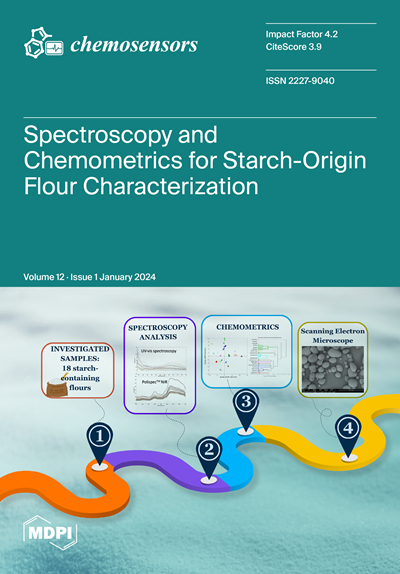Surface-Enhance Raman Spectroscopy Detection of Thiabendazole in Frozen Food Products: The Case of Blueberries and Their Extracts
IF 3.7
3区 工程技术
Q2 CHEMISTRY, ANALYTICAL
引用次数: 0
Abstract
To improve the control and detection methods of thiabendazole (TBZ), a fungicide and parasiticide often used in food products, we investigated the performance of the SERS technique applied to frozen blueberry fruits available on the market. TBZ-treated fruit extracts provided a multiplexed SERS feature, where the SERS bands of TBZ could be distinctly recorded among the characteristic anthocyanidins from blueberries. Quantitative SERS of TBZ in a concentration range from 20 µM to 0.2 µM has been achieved in solutions. However, quantitative multiplexed SERS is challenging due to the gradually increasing spectral background of polyphenols from extracts, which covers the TBZ signal with increasing concentration. The strategy proposed here was to employ food bentonite to filter a substantial amount of flavonoids to allow a higher SERS signal-to-background recording and TBZ recognition. Using bentonite, the LOD for SERS analysis of blueberry extracts provided a detection limit of 0.09 µM. From the relative intensity of the specific SERS bands as a function of concentration, we estimated the detection capability of TBZ to be 0.0001 mg/kg in blueberry extracts, which is two orders of magnitude lower than the maximum allowed by current regulations.冷冻食品中噻苯达唑的表面增强拉曼光谱检测:以蓝莓及其提取物为例
为了改进食品中常用的杀真菌和寄生虫剂噻苯达唑(TBZ)的控制和检测方法,本研究采用SERS技术对市场上销售的冷冻蓝莓果实进行了检测。TBZ处理的果实提取物具有多路SERS特征,其中TBZ的SERS谱带可以清晰地记录在蓝莓的特征花青素中。在浓度为20µM ~ 0.2µM的溶液中,获得了TBZ的定量SERS。然而,由于提取物中多酚的光谱背景逐渐增加,随着浓度的增加,多酚覆盖了太赫兹信号,因此定量复用SERS具有挑战性。本文提出的策略是使用食物膨润土来过滤大量的类黄酮,以获得更高的SERS信号-背景记录和TBZ识别。使用膨润土对蓝莓提取物进行SERS分析,检出限为0.09µM。从特定SERS谱带的相对强度与浓度的关系来看,我们估计蓝莓提取物中TBZ的检测能力为0.0001 mg/kg,比现行法规允许的最大值低两个数量级。
本文章由计算机程序翻译,如有差异,请以英文原文为准。
求助全文
约1分钟内获得全文
求助全文
来源期刊

Chemosensors
Chemistry-Analytical Chemistry
CiteScore
5.00
自引率
9.50%
发文量
450
审稿时长
11 weeks
期刊介绍:
Chemosensors (ISSN 2227-9040; CODEN: CHEMO9) is an international, scientific, open access journal on the science and technology of chemical sensors published quarterly online by MDPI.The journal is indexed in Scopus, SCIE (Web of Science), CAPlus / SciFinder, Inspec, Engineering Village and other databases.
 求助内容:
求助内容: 应助结果提醒方式:
应助结果提醒方式:


